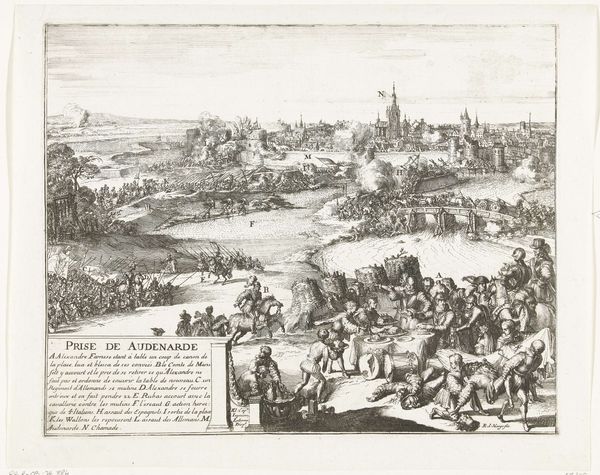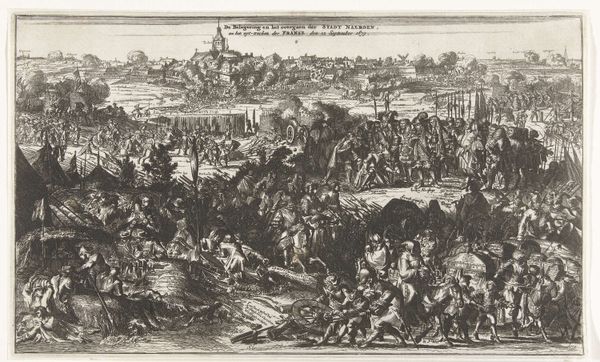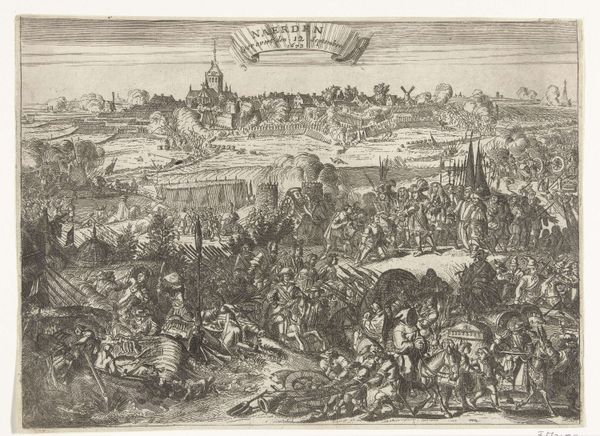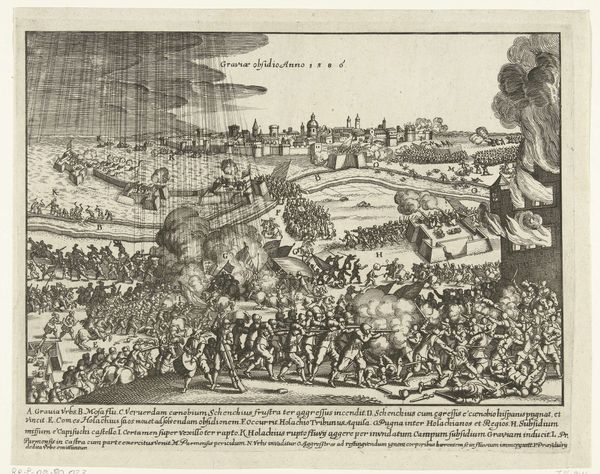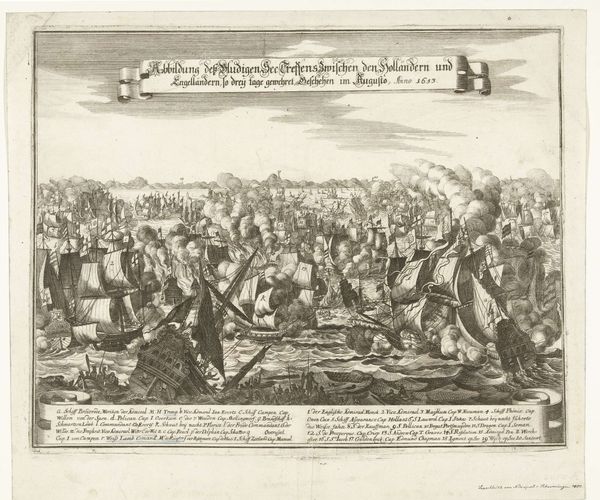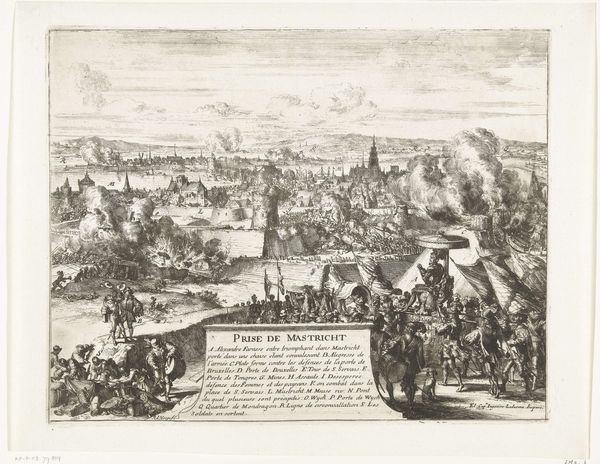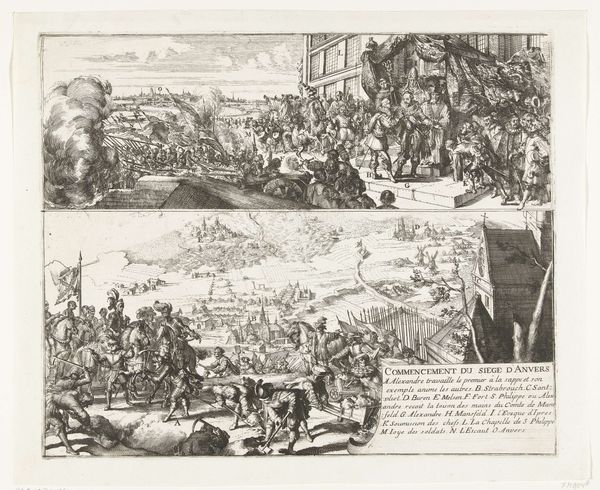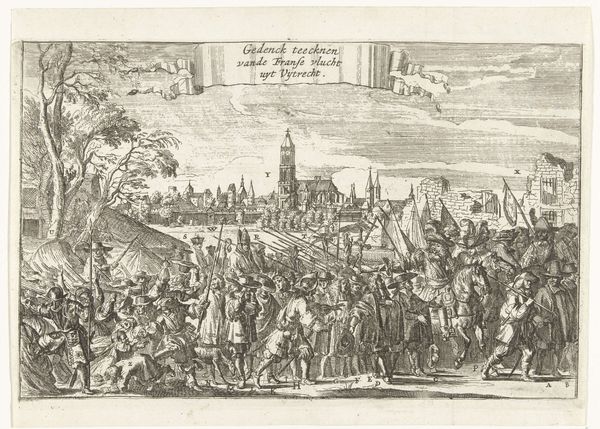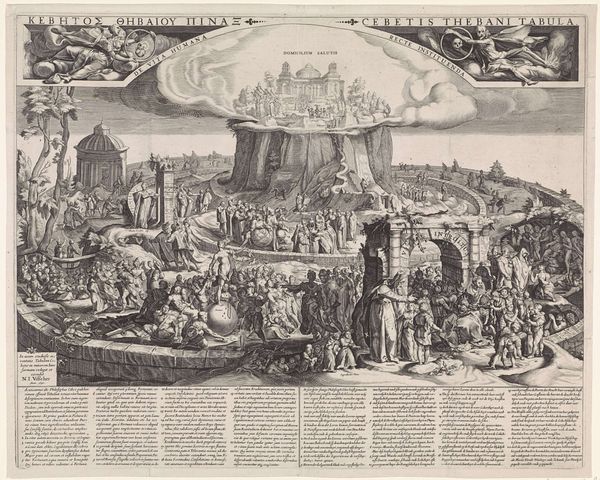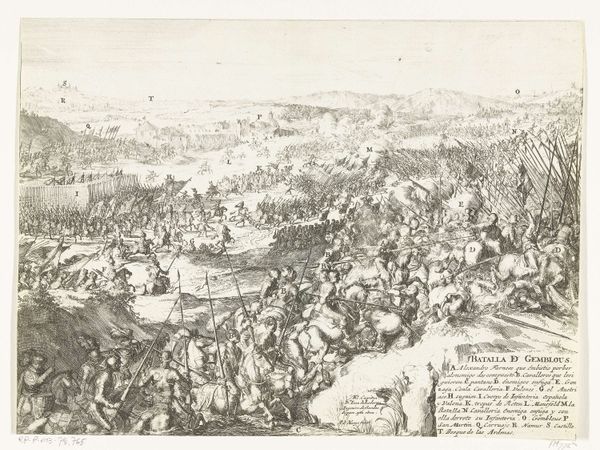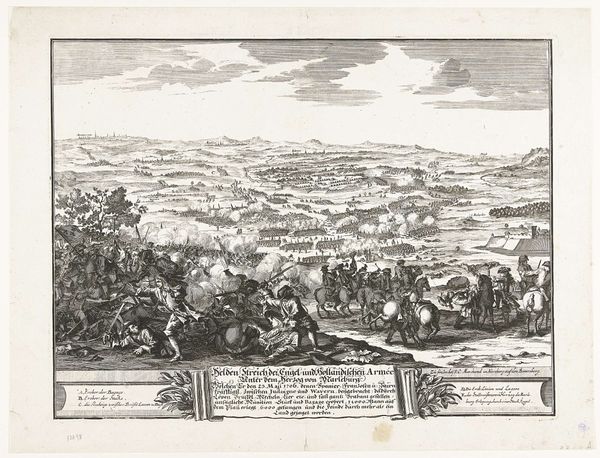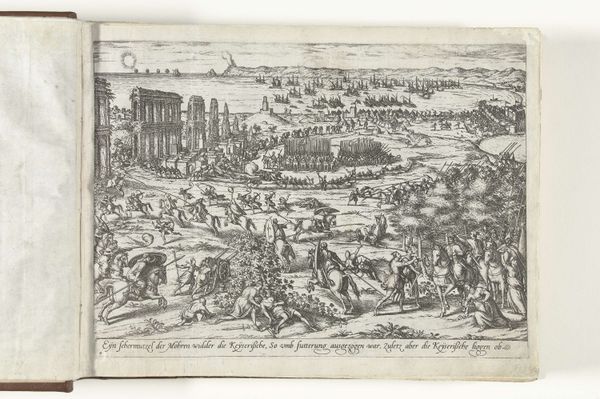
graphic-art, print, engraving
#
graphic-art
#
baroque
# print
#
old engraving style
#
cityscape
#
history-painting
#
engraving
Dimensions: height 265 mm, width 333 mm
Copyright: Rijks Museum: Open Domain
Romeyn de Hooghe's etching, "Inname van Corbeil, 1590," captures a dramatic siege with a striking composition of lines and forms. The stark contrast between light and shadow emphasizes the chaos and violence of the scene. The structure of the artwork is built upon a series of diagonal lines that pull the viewer's eye from the lower right towards the upper left, mirroring the invading forces' push toward the city. This creates a sense of dynamic movement and disorder. The city's architecture is rendered with meticulous detail, yet its stability is threatened by the invading army. De Hooghe employs the semiotic codes of 17th-century war imagery, yet the image does more than just depict a historical event; it delves into the complex power dynamics of conflict. The etching’s formal qualities—its lines, composition, and perspective—function as signs that contribute to a broader discourse on war, power, and representation. This visual language invites ongoing interpretation, where the artwork remains relevant through evolving cultural and philosophical lenses.
Comments
No comments
Be the first to comment and join the conversation on the ultimate creative platform.

